Metals
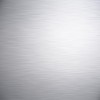
Brushed Stainless Steel

Glossy Stainless Steel
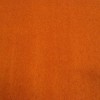
Corten Steel
Property data given in this document is typical for bar products covered by EN 10269:2013. ASTM, EN or other standards may cover products sold.
It is reasonable to expect specifications in these standards to be similar but not necessarily identical to those given in this datasheet.
Table 1. Chemical composition for 304 stainless steel alloys
% | 304 | 304L | 304H |
C | 0.0 - 0.07 | 0.0 - 0.03 | 0.04 - 0.08 |
Mn | 0.0 - 2.0 | 0.0 - 2.00 | 0.0 - 2.0 |
Si | 0.0 - 1.00 | 0.0 - 1.00 | 0.0 - 1.0 |
P | 0.0 - 0.05 | 0.0 - 0.05 | 0.0 - 0.04 |
S | 0.0 - 0.03 | 0.0 - 0.02 | 0.0 - 0.02 |
Cr | 17.50 - 19.50 | 17.50 - 19.50 | 17.00 - 19.00 |
Ni | 8.00 - 10.50 | 8.00 - 10.50 | 8.00 - 11.00 |
Fe | Balance | Balance | Balance |
N | 0.0-0.11 | 0.0-0.11 | 0.0 - 0.10 |
Alloy Designations
Stainless steel 304 also corresponds to the following standard designations and specifications:
Euronorm | UNS | BS | En | Grade |
1.4301 | S30400 | 304S15 304S16 304S31 | 58E | 304 |
1.4306 | S30403 | 304S11 | - | 304L |
1.4307 | - | 304S11 | - | 304L |
1.4311 | - | 304S11 | - | 304L |
1.4948 | S30409 | 304S51 | - | 304H |
Corrosion Resistance of Stainless Steel 304
Stainless steel 304 has excellent corrosion resistance in a wide variety of environments and when in contact with different corrosive media.
Pitting and crevice corrosion can occur in environments containing chlorides. Stress corrosion cracking can occur at temperatures over 60°C.
Heat Resistance of Stainless Steel 304
Stainless steel 304 has good resistance to oxidation in intermittent service up to 870°C and in continuous service to 925°C.
Fabrication of Stainless Steel 304
Fabrication of all stainless steels should be done only with tools dedicated to stainless steel materials.
Tooling and work surfaces must be thoroughly cleaned before use.
These precautions are necessary to avoid cross contamination of stainless steel by easily corroded metals that may discolour the surface of the fabricated
product.
Cold Working of Stainless Steel 304
Stainless steel 304 readily work hardens. Fabrication methods involving cold working may require an intermediate annealing stage to alleviate work
hardening and avoid tearing or cracking. At the completion of fabrication a full annealing operation should be employed to reduce internal stresses and
optimise corrosion resistance.
Hot Working of Stainless Steel 304
Fabrication methods, like forging, that involve hot working should occur after uniform heating to 1149-1260°C. The fabricated components should then be
rapidly cooled to ensure maximum corrosion resistance.
Heat Treatment of Stainless Steel 304
Stainless steel 304 cannot be hardened by heat treatment
Solution treatment or annealing can be done by rapid cooling after heating to 1010-1120°C.
Powder Coated Steel & Aluminium

White
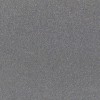
Metallic Grey
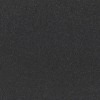
Cobalt Grey
Powder coating exceeds the requirements of AAMA2604-10 and surpasses the performance of all leading architectural powder coatings ,designed to offer significantly higher gloss retention and resistance to colour change combined with maximum film integrity to ensure long term cosmetic and functional protection.
Chemical type: Suitable for electrostatic spraySpecific gravity
10 mins at 200oC 8 mins at 210oC
Mechanical and chemical tests carried out on chromated aluminium panels. All tests are performed on panels coated with 60 to 80 microns of a gloss finish powder coating stoved for 10 minutes at 200oC (metal temperature). Powder coatings are designed to exceed the requirements of AAMA2604-10.
Polyester
Dry Adhesion Impact resistance
Dry Film hardness Abrasion resistance
Salt Spray
Constant Humidity Resistance Permeability Sulphur Dioxide
Chemical Resistance Exterior durability
Colour stability at elevated temperatures
AAMA2604 Clause 7.4 AAMA2604 Clause 7.5
ISO2815 (Buchholz) AAMA2604 Clause 7.6
AAMA2604 Clause 7.8.2 ASTM B117 at 35oC D1654
AAMA2604 Clause 7.8.1 ASTM D2247, ASTM D714 AS3715 2002
ISO3231 (Kesternich)
5 years Florida exposure AAMA 2604-10
Pass no removal of film
Pass-no tape removal of film to substrate following 0.1" deformation Pass
Pass-abrasion coefficient >20
Pass at 3000 hrs - no corrosion more than 1.0-2.0 mm from scribe Minimum blister rating 8
Pass at 3000 hrs – blister formation less than "few" size no 8.
Pass - no blistering, loss of gloss or discolouration.
Generally good resistance to acids, alkalis and oils at normal temperatures
Excellent performance, Colour change ΔE less than 5, glossretention >30%.
Chalking - none in excess of no.8 ASTM D4214 - D659
Excellent for continuous exposure up to 120oC
Pre-treatment
For maximum protection it is essential to pretreat components prior to the application of Interpon D2015 UltrivaTM Sablé in accordance with the Interpon D Approved Applicators Manual. Aluminium components must receive a full multi-stage chromate conversion coating to clean and conditions the substrate. Detailed advice should be sought from the pretreatment supplier.
Application
Additional Information
Unused or over-sprayed powder coating can be reclaimed up to a maximium of 30% using suitable equipment and recycled through the coating system.
A 20-year film integrity / 15-year colour warranty
no organic solvents and can contribute toward satisfying the IEQ credits in the following Green Star® rating tools:
Safety Precautions Note: Products are not reviewed or certified under the Green Star® rating system. Green Star® credit requirements cover the performance of materials in aggregate, not the performance of individual products or brands. For more information on Green Star®, visit www.gbca.org.au
Wood
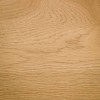
Ash
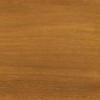
Iroko
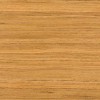
Teak
Tic / Iroko operation is carried out according to the principles of Tik / Iroko Association and according to DIN CEN / TS 15679: 2008-03 / European norms.
Iroko Deck and Teak materials are flawless materials purified from the stem.
Material Tolerances
Length: +/- 2 mm (DIN EN 14519)
Width: +/- 1 mm (DIN EN 4074-5)
Thickness: +/- 1 mm (DIN EN 4074-5)
Tick / Iroko materials are named as Strength Class 1 according to DIN EN 335-2 and DIN EN 350-2 norms.
Tick / Iroko materials are honey-colored and natural color differences may occur.
Glue Laminated Timber
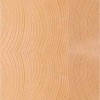
Spruce
|
|
GL 24 |
GL 28 |
GL 30 |
GL 32 |
|
Assembly |
combined (c) / homogeneous (h) |
|||
|
Wood Species |
spruce |
|||
|
Manufacture |
in accordance with EN 14080 |
|||
|
Moisture content |
9 - 14 % |
|||
|
Mechanical grading |
EN 14080 uyarınca |
|||
|
Lamella thickness |
40mm |
|||
|
Gluing |
modified melamine resin, light, non-darkening joints |
|||
|
Surface quality |
planed on 4 sides, chamfered edges, visible quality, non-visible quality |
|||
|
Calculatory combustion behavior |
0,7mm / min |
|||
|
Fire behavior |
D-s2, d0 |
|||
|
Change in shape |
axially: 0.01 - 0.02 % per 1 % change in moisture content radially: 0.19 % per 1 % change in moisture content tangentially: 0.34 % per 1 % change in moisture content |
|||
|
Heat conductivity |
0,13 W/mk |
|||
|
Water vapor resistance coefficient |
µ = 40 |
|||
|
Component |
Combined |
Homogeneous |
||||||
|
Strength Class |
GL 24c |
GL 28c |
GL 30c |
GL 32c |
GL 24h |
GL 28h |
GL 30h |
GL 32h |
|
Stength values (N/mm2) |
|
|||||||
|
Deflection (ƒm,g,k) |
24 |
28 |
30 |
32 |
24 |
28 |
30 |
32 |
|
Tension: parallel (ƒt,0,g,k) |
17 |
19.5 |
19.5 |
19.5 |
19.2 |
22.3 |
24 |
25.6 |
|
Tension: at right angles |
0,5 |
0,5 |
0,5 |
0,5 |
0,5 |
0,5 |
0,5 |
0,5 |
|
Pressure: parallel (ƒc,0,g,k) |
21.5 |
24 |
25.5 |
24.5 |
24 |
28 |
30 |
32 |
|
Modulus of elasticity: parallel (E0,g,mean) |
11,000 |
12,500 |
13,000 |
13,500 |
11,500 |
12,600 |
13,600 |
14,200 |
|
Modulus of elasticity: at right angles (E90,g,mean) |
300 |
300 |
300 |
300 |
300 |
300 |
300 |
300 |
|
Shear modulus: Gg,mean |
650 |
650 |
650 |
650 |
650 |
650 |
650 |
650 |
|
Density characteristic values (kg/mm3) |
|
|||||||
|
Density g,k |
365 |
390 |
390 |
400 |
385 |
440 |
440 |
650 |

